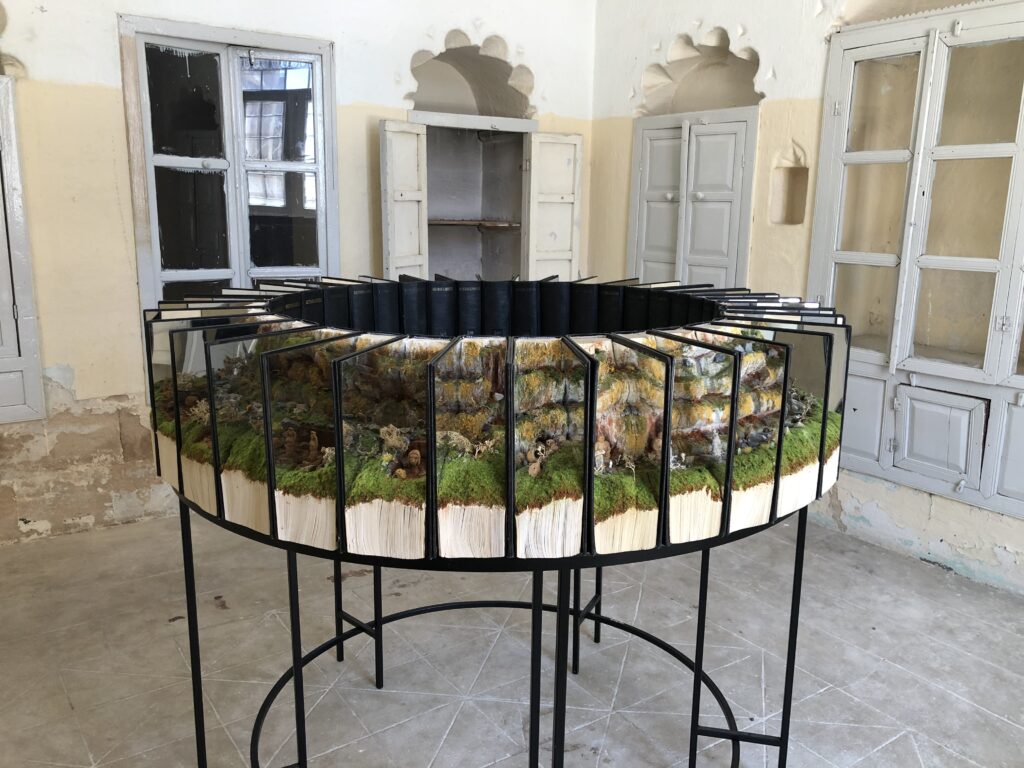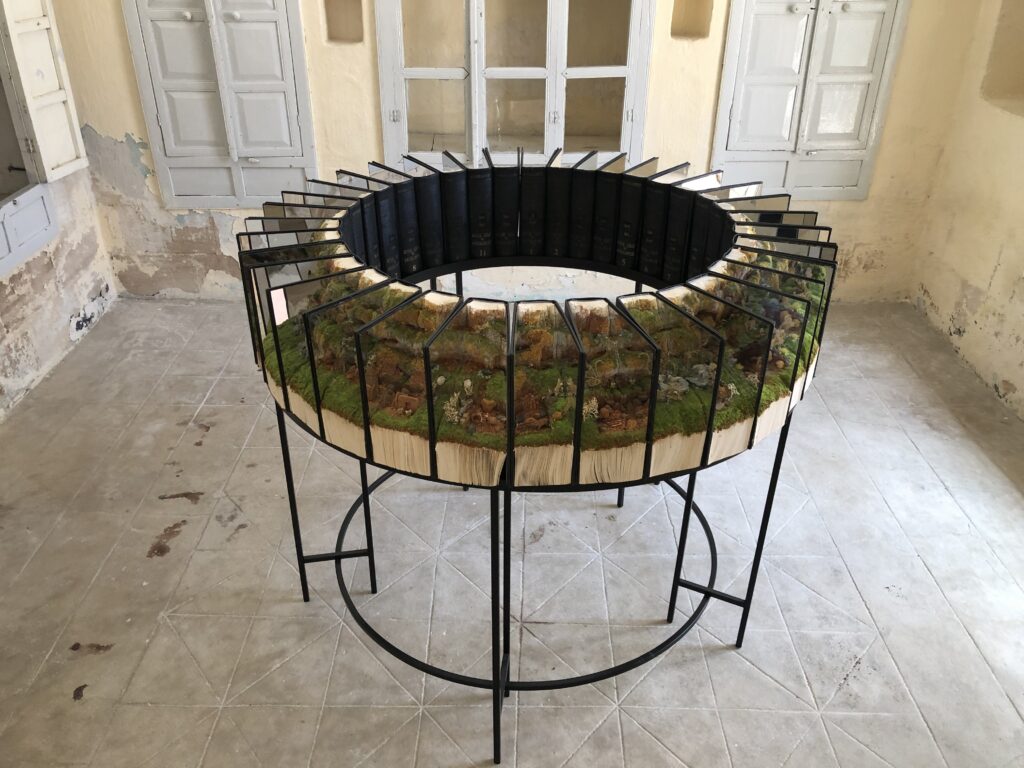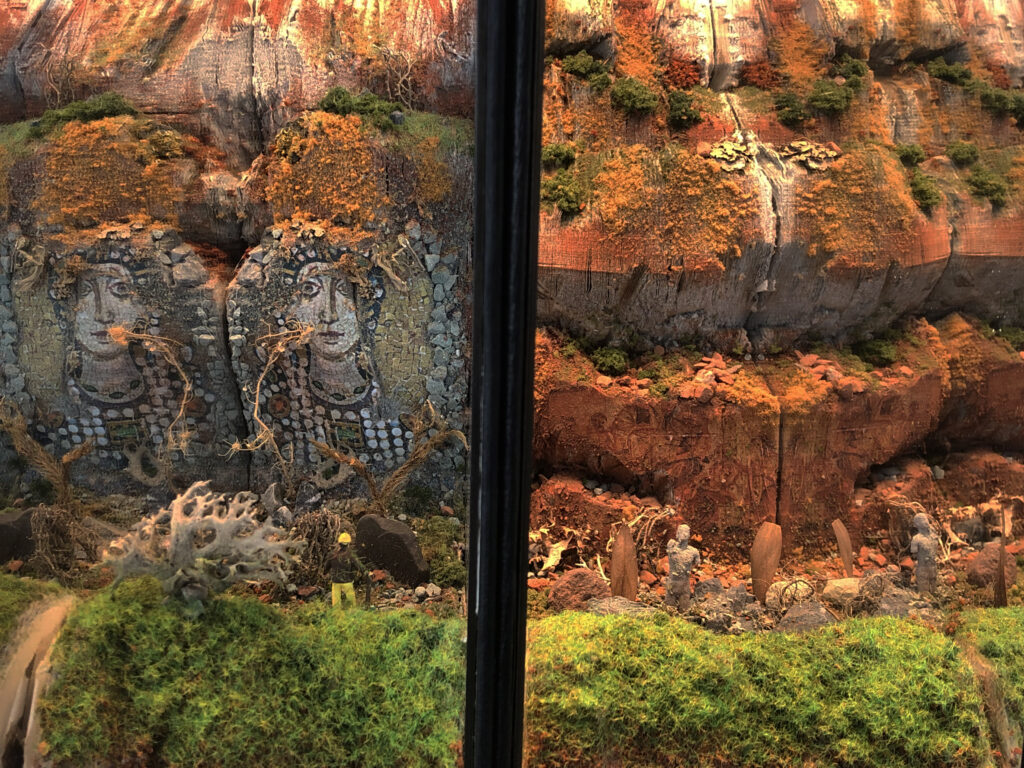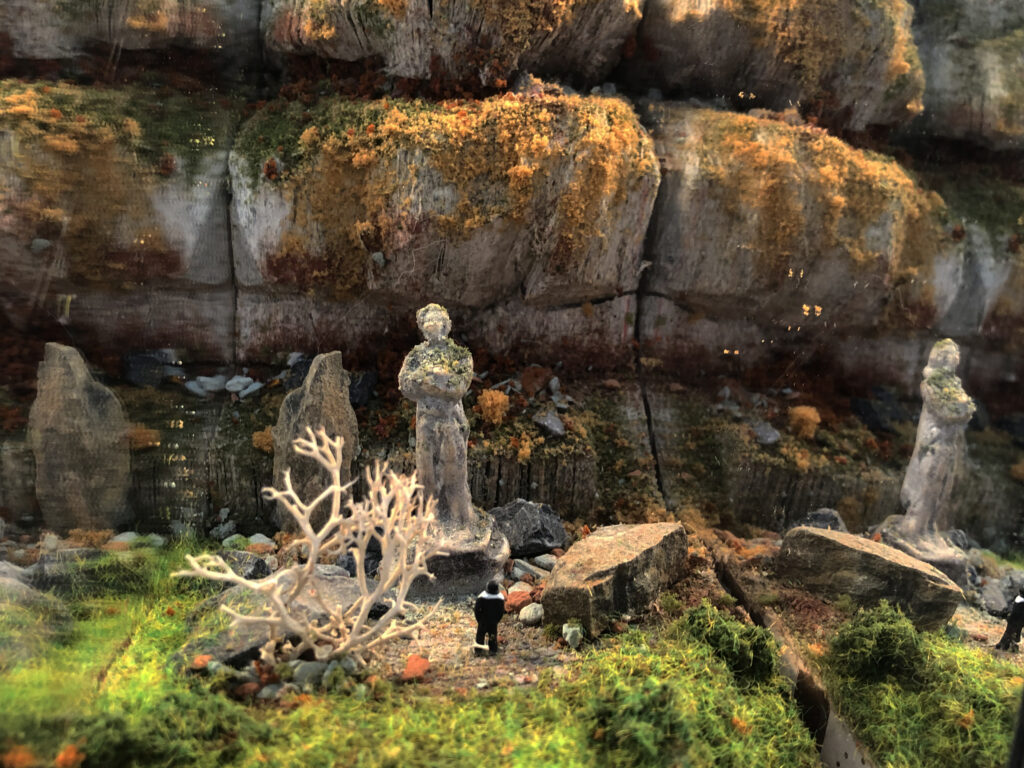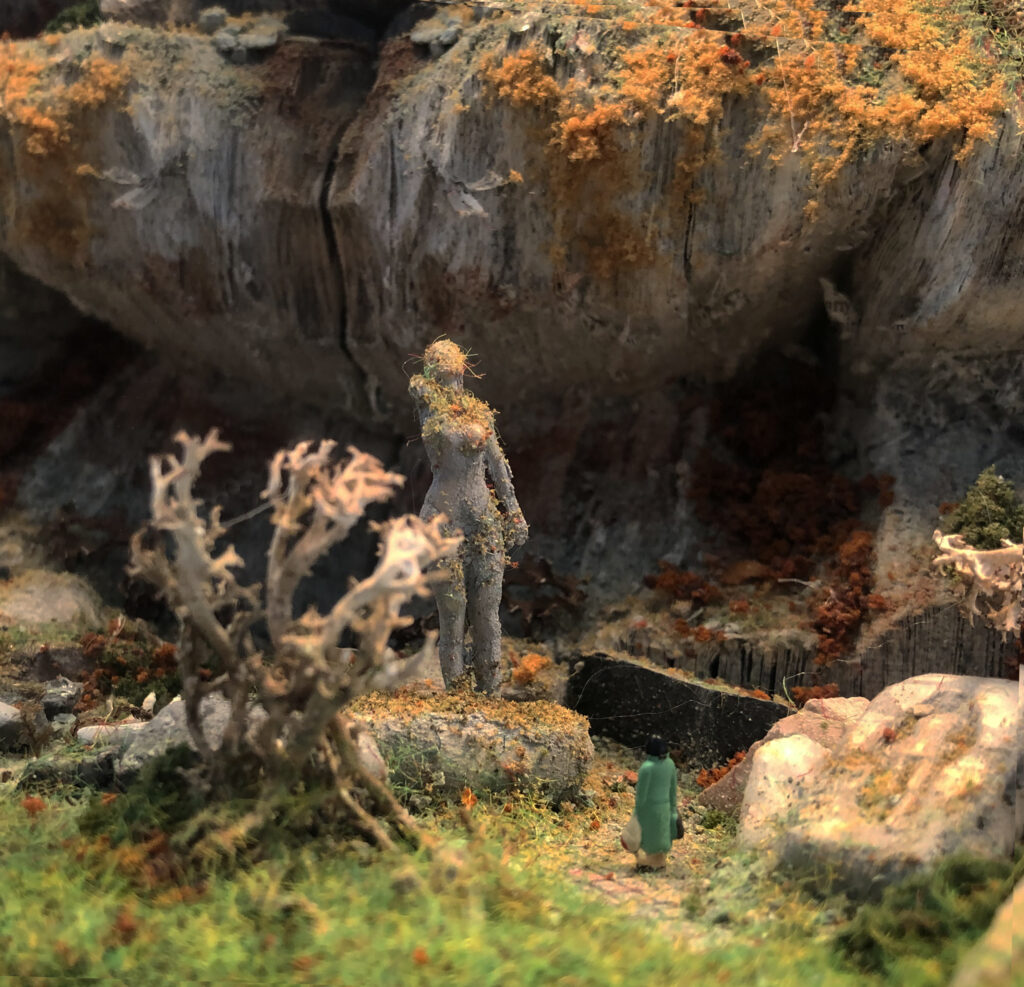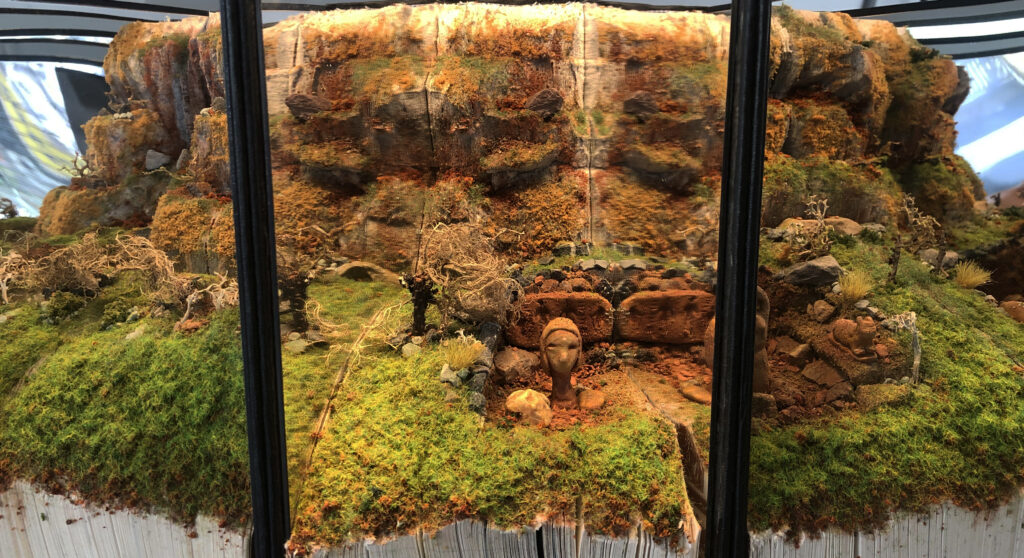Site archéologique Meydan Larousse, 2021
İrem Tok’s work “Site Archéologique Meydan Larousse” (2021) focuses on encyclopaedias, something she has been interested in for many years. This installation, which consists of three series and 36 encyclopaedias in all, is one of the artist’s most thorough and elaborate works to date. Encyclopaedias are the most emblematic manifestations
of Enlightenment age philosophy, which the artist frequently uses as a medium. In addition to providing structured knowledge about science, arts, and crafts, encyclopaedias also feature the visuals that symbolize it. Instead of modern thought’s desire to govern and instrumentalize nature by eroding, erasing, and cutting encyclopaedias, Tok suggests a “closer look” in which life itself is felt, rejecting precise and unambiguous
knowledge. While the presence of encyclopaedias indicates the importance of the knowledge provided, the little characters and cramped living quarters in them tempt us to approach and write a personal story.
The artist developed a microcosm in encyclopaedias that functions as a location between spaces and histories. Artworks and relics such as sculptures, monuments, mosaics, and reliefs from various times can be
seen in these places, which were produced by digging the pages and revealing their context as if they were soil. These artifacts are brought together in the columns of the encyclopaedia pages. The artist uses
organic materials from nature, such as lichen and moss, as well as her own sculptures and materials, in her work. These species exist virtually and simultaneously with the earth’s existence, and thus are actual
witnesses of time. Winds, rains, moss/lichen, and microorganisms have transformed nature over the years; the flow of rivers, from mountain glaciers to tiny stones in the sea, nature has taken on radically various
forms. Tok not only carries the knowledge of the past to the present by addressing encyclopaedias, which are the symbols of a culture and language and even one of the building blocks of our research culture
before digitalization, but she considers natural events and biological processes that occur outside of human control as a metaphor, but also creates her own topography/microcosm by considering natural events
and biological processe.
